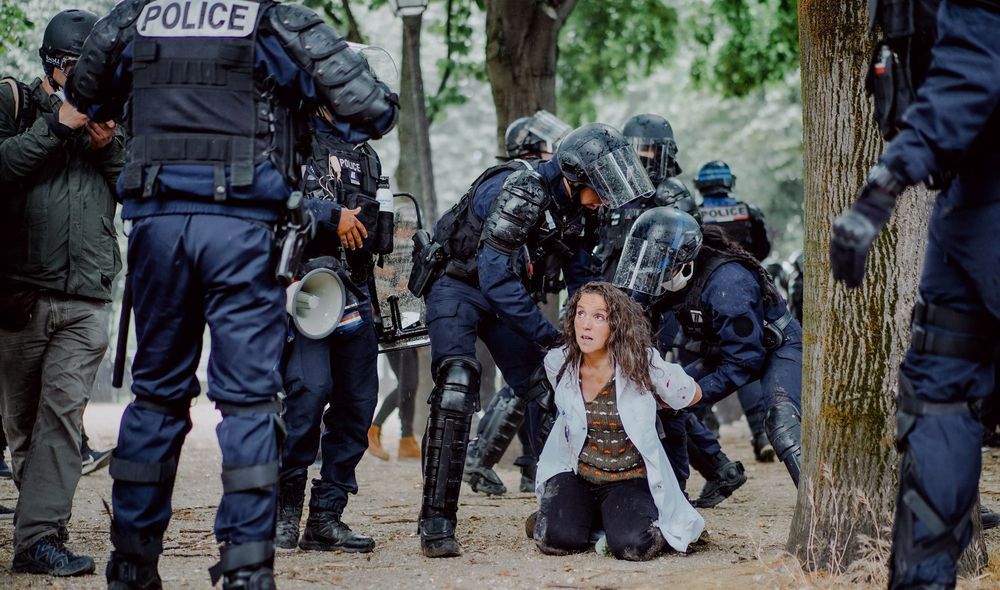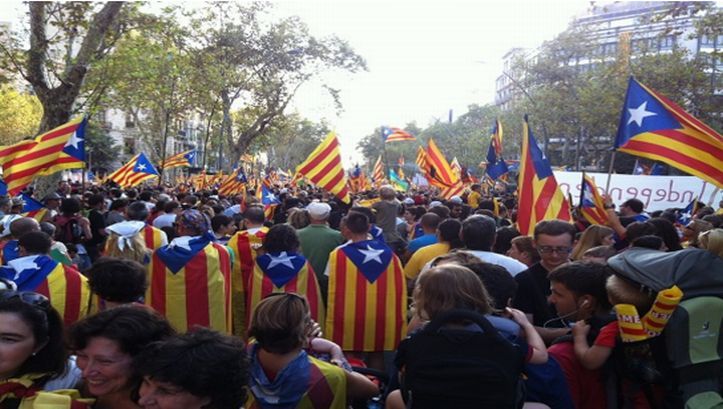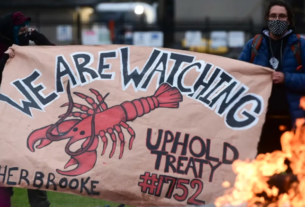Around the world countries are lifting the restrictions that were introduced to contain the COVID-19 pandemic. People are allowed to leave their homes, and workplaces, cafes and stores are re-opening.
The sharp closures of society and economy were needed to reduce the level of infection and death from the virus, only because of the inadequate or non-existent early responses. When the World Health Organization (WHO) was warning about COVID-19 in January, most governments around the world did nothing. Some, such as Trump and Bolsonaro, dismissed it. On March 7 Trump said “No, I’m not concerned at all. No, I’m not. No, we’ve done a great job.” On March 24, Bolsonaro compared the coronavirus to a “little flu” adding that “Brazilians don’t catch anything … they already have the antibodies to keep it from spreading.” The US, followed by Brazil, now have the highest number of infections and deaths.
Other governments such as Sweden’s and Britain’s talked about allowing “herd immunity” to deal with the pandemic, an idea without solid scientific basis and a recipe for mass death. But even less outrageous governments, such as Canada’s, responded too little and too late. A few governments such as Taiwan, Cuba, Iceland and South Korea took rapid action and avoided both severe lockdowns and major fatalities.
It is not surprising that right-wing populist governments, with a hostility to science, have had the worst cases in the world. Trump in the US, Bolsonaro in Brazil, Putin in Russia, Johnson in Britain and Modi in India have overseen half of all the world’s cases and deaths.
Pre-existing conditions, such air pollution, gutted public health systems and climate change, made the impacts of COVID-19 far worse than it needed to be. Capitalism has compromised humanity’s immune system, weakening the response to the virus. The lack of stocks of personal protective equipment (PPE), overcrowded housing, and understaffed and ill-prepared seniors’ homes have all added to the deaths.
Richard Horton, editor-in-chief of The Lancet described the deaths as not “unfortunate,” nor “unlucky, inappropriate, or even regrettable,” as often described by governments. “Every death was evidence of government misconduct – reckless acts of omission that constituted breaches in the duties of public office.… Missed opportunities and appalling misjudgments were leading to the avoidable deaths of tens of thousands of citizens.”
Opening
The COVID-19 pandemic is nowhere near under control: it is spreading and the number of cases is increasing. WHO reported that Sunday, June 21 was the worst single-day increase in coronavirus cases, at more than 183,000 new cases in 24 hours. Yet, governments around the world are lifting restrictions on people’s movements and ending business closures. This is largely presented in a positive light: people can get their hair cut, go to a park or meet some friends. However, behind this narrative lies a push from big corporations.
Big business and their governments are taking a calculated gamble with people’s lives. Many countries are re-opening even while the cases of COVID-19 continue to increase. In the US states such as Arizona, Texas and Alabama that re-opened in May, the number of new cases is snowballing.
Not only is COVID-19 not under control, most countries still lack adequate resources to test and trace new cases and the shortage of protective equipment remains widespread. Re-opening is based on a cold calculation of profit and loss, profit for business and loss of human lives.
The Organization for Economic Co-operation and Development has stated the world faces the worst global recession in nearly a century. The Bank of England states that the British economy is heading for its worst crash in more than 300 years, since 1706!
Brutal competition between companies and national economies is driving re-opening. The early re-starters hope to gain an advantage over others and so get a larger share of the smaller market that has been devastated by the world depression.
The people being sent back to work are not CEOs, bankers and the other members of the 1%. Many essential workers and others less essential, such as in construction, never stopped working. They will be joined by more in manufacture, retail, etc. As Tim Bray, recently-quit Amazon executive explained, “The people who are talking about the urgent need to restart the economy aren’t themselves offering to go out and work. They’re saying, ‘You worker-bees go back and face COVID, and let’s see how that works out.’”
Many people are understandably reluctant to go back to work, go to restaurants or send their kids to school, unless economic reality forces them. The Canadian government, generally seen as on the saner end of the international spectrum, did introduce emergency support for most people. Now they are looking to coerce people back to work, with plans to cut off payments if a person doesn’t go back to work when “it is reasonable to do so” or if they are able to work but decline a reasonable job offer.
Lockdown: A Warning of What is to Come
A woman, recently laid-off from work due to COVID-19, was fined $880 in Ottawa for sitting on a park bench during COVID-19 restrictions. A man in the same city was given the same fine for walking his dog. Meanwhile, government health officers in Alberta facilitated the re-opening of a workplace that was the source of 1,500 COVID cases and three deaths. The company, Cargill, has not even been fined.
In other countries things are even worse. In Italy over 100,000 people were fined for being outside. Workplaces were allowed to stay open and helped fuel Italy’s COVID-19 disaster. In several countries including the Philippines and Kenya police killed innocent people.
The enforcement of the lockdowns, repressing workers and the public while giving a free pass to big business, will be repeated in opening.
Workers who decline to go to work due to safety concerns will face having their support income cut. Will all companies be required by law to set-up the workplace for safe distancing, provide protective clothing, hand sanitizer and will there be regular tests for infection? Powerful safety actions are planned for the major sporting leagues, so why not the same protection for workers? These protections were not applied during the first wave of the pandemic so are very unlikely to apply in re-opening.
Police vs Nurses
Streets across the world have been filled with police in full body armour. The ruling class clearly have been preparing for some events, spending large sums of money to equip the police with body armour, tear gas, and armoured cars. Yet, even now, months after the COVID-19 pandemic began, health workers still do not have protective equipment. The priorities of the capitalists are clear repression not protection. Health workers may be “heroes,” but they are disposable “heroes.” Fully armoured police attacked a nurses’ protest in France on June 16.
Trump mobilized the national guard in days to attack peaceful rallies demanding an end to police murders. In contrast, the US government’s response to COVID-19 continues to be a woeful disaster.
New Blame
The ruling classes are already preparing their narrative for the second wave of COVID-19, which they know is coming, as they re-open society without adequate protection, testing or tracing.
They will blame the irresponsible public for not keeping two metres apart. Throughout COVID-19 there has always been one law for the rich and one for poor and working class. “We” have never “been in this together.”
Of course, most people will welcome re-opening. In poor countries, where the government has not provided a safety net, going to work is essential to earn wages for food and shelter. Staying at home is much easier for the rich than for poor people. If the kitchen table is now the dining table, the workplace and the classroom, things can be much tougher than homes with more space. For others, being forced to stay at home is a nightmare, especially people in abusive situations. For teenagers it can be miserable being stuck at home with parent(s) who do not understand. Being stuck in a small apartment without any access to the outdoors is more like prison, compared to a home with some outside space. Many of the COVID-related policies were written by people with no understanding of the reality of life of millions; and then they often break the very rules that are imposed on others. One example is Dominic Cummings, Boris Johnson’s senior advisor, who travelled across England during the lockdown, defying government rules.
The public will be blamed to hide the real causes, which includes the premature re-opening of workplaces in conditions where workers cannot keep two metres apart, the lack of mass rapid testing and then tracing of contacts and universal provision of masks and protective equipment. Most countries that are re-opening have had some level of work closure, lockdown or stay at home policies for several months. During that time, a responsible government would have worked flat out to develop and mass produce a high quality test so there would be free testing in every community, neighbourhood, large workplace, etc. South Korea developed a test and was mass producing the test kits by mid-February. Months later Canada, and many other countries, still lack the ability to carry out mass testing. Similarly, masks, even the high grade N95s, are not expensive to make. Yet firefighters in Ontario have no masks and will wear breathing masks connected to oxygen tanks – weighing 15 kilograms – to any calls that pose a risk of COVID-19 infection.
Countries are opening up totally unprepared and fully aware there will be a second wave. Many countries are still trying to cope with the first wave and they open knowing that the first wave will surge higher. A second wave, or a turbo-charged upturn of the first wave, will be much harder to bear. Many more small businesses will be forced out of business. People will be angry that all the sacrifice of physical distancing and isolating for months was for nothing and was squandered in a rush to get profits rolling again without the adequate tests and protective equipment.
Reconstruct Not Re-Open the Economy
While politicians talk about re-opening the economy, business is making clear that this means a return to the world before COVID-19. For months, many retail workers have been called “heroes” and received an extra $2 an hour. Now the super-rich are cutting this. The world’s richest man wants more money for himself, so Amazon has cut its workers’ pay. The Weston family, Canada’s second richest family and Ireland’s richest family, who owns Loblaws, has also cut workers’ pay.
A well-known right-wing Canadian journalist, Andrew Coyne, wrote that rather than a shorter working week to get the economy going “we’re going to need everyone working flat out – not just five days [a week], but six or seven – just to pay the government’s bills.” He certainly means workers, not the bosses, and not a hint of higher taxes on the super rich.
However, large parts of the economy will not re-open. The world is now in the grip of a depression. COVID-19 triggered this depression, but the world was already on the edge of, at least, a deep recession at the start of this year.
Capitalists only employ workers if the bosses are confident they can make a profit. With millions facing long-term unemployment and many more concerned about the future, consumers, many already burdened with huge debts, will not be spending nearly as much as in the past. The other motor of capitalism is investment by companies. In many sectors of production there was widespread over-capacity, the ability to make more than is used. Steel overcapacity is estimated at over 500 million metric tons (MT). This is five times more than Japan, the world’s second largest producer after China, produces. In 2019, automotive factories worldwide built 89 million vehicles with a capacity to build 148 million. There are similar figures for many areas of production. In these circumstances, no matter how much money governments throw at the banks and industry, they will not invest significantly in production. Faced with a sharp drop of demand from consumers and for investment, what will re-start the economy?
Capitalism wasn’t working before COVID-19 and has been found wanting during the pandemic. Rather than re-opening, the economy needs reconstruction. The public sector will need to be a powerful driver of economic activity and employment.
Key features of reconstruction would include:
- Major taxation of the super-rich and big corporations and close all tax havens to raise the necessary funds.
- Bring into public ownership key sections of the economy including banking, the internet, the energy industry, transportation and privately-owned utilities.
- A comprehensive, universal, public health system, integrated with social care.
- A Jobs Program to provide well-paid union jobs that focus on meeting human needs and the environment, including a shift to renewable energy, a mass home building and refitting program, and upgrading the rail network for passengers and freight.
- Democratic control of work and society.
Naomi Klein in The Shock Doctrine argued that the ruling class uses shocks and disasters to advance its agenda. The world certainly has gone through and is facing multiple shocks – COVID-19, World Depression and Climate Change. However, the results of shocks do not always favour the ruling class. We are seeing a class struggle. The seething anger below the surface has been exploding, with massive uprisings in response to police murders of Black Americans and other police murders around the world.
World War I was a major shock and initially the ruling class benefited with national unity and the workers’ leaders abandoned struggle. Yet, three years later the Russian working class overthrew the monarchy and then took power. This provided an inspiring spark to the seething anger after four years of the slaughter of war and mass hunger and suffering.



